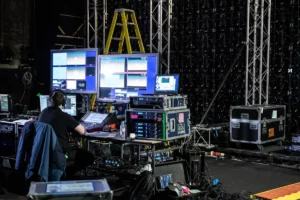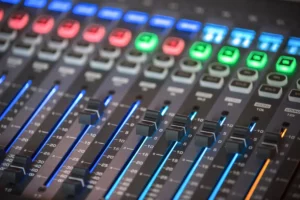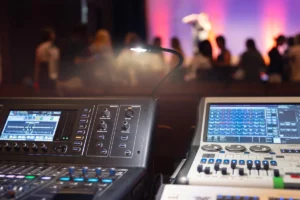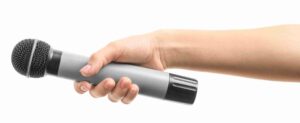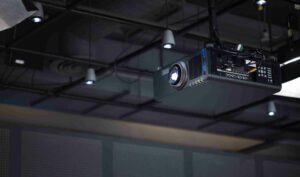Wireless Microphone Basics
Wireless microphones use a battery-powered transmitter to send UHF radio waves to a receiver located within a specific range.
As such, the battery’s strength plays a vital part in the receiver’s success and the transmitter’s connection. Once a battery loses power, the microphone’s audio quality begins to suffer by sounding scratchy or distorted, especially during the recording process.
We recommend replacing the battery every hour or after every performance.
To install the wireless microphone:
- Ensure the transmitter is turned off
- Ensure the receiver is turned on. Your microphone may come with an automatic setting that scans the area and selects the right frequency for use with the system.
- Once the frequency is found, adjust the receiver’s volume to the appropriate level for the situation and turn on the transmitter.
- Sync the transmitter and receiver to make any adjustments deemed necessary.
When planning to use a wireless microphone, it’s best to consider the different types available.
A handheld microphone with a built-in transmitter is best for those who need a microphone to move around freely and pass to others.
Clip-on lapel (or lavalier) microphones use a more substantial receiving element that allows them to receive audio further away from the microphone so that a presenter may wear a discreet microphone on their clothes without having to worry if it will pick up his or her speech.
These microphones use a transmitter in a pack that attaches to the presenter’s body. The transmitter is fixed within the pack, but the microphone can be moved freely.
There are times when users may experience dropouts, where the sound cuts in and out. This often happens when the transmitter and receiver are too far apart, and moving one or both objects closer will usually stop the problem from occurring. Larger items placed around the microphone may also cause these dropouts and other distortion issues. Removing the objects typically solves the problem.
As stated above, wireless microphones work using either UHF or VHF frequencies. UHF requires more power, which allows it to have a more extensive range than VHF models. UHF is also less prone to problems associated with distortion from external objects. VHF models (being less expensive) typically have a few more distortion and range issues but have longer battery life.

